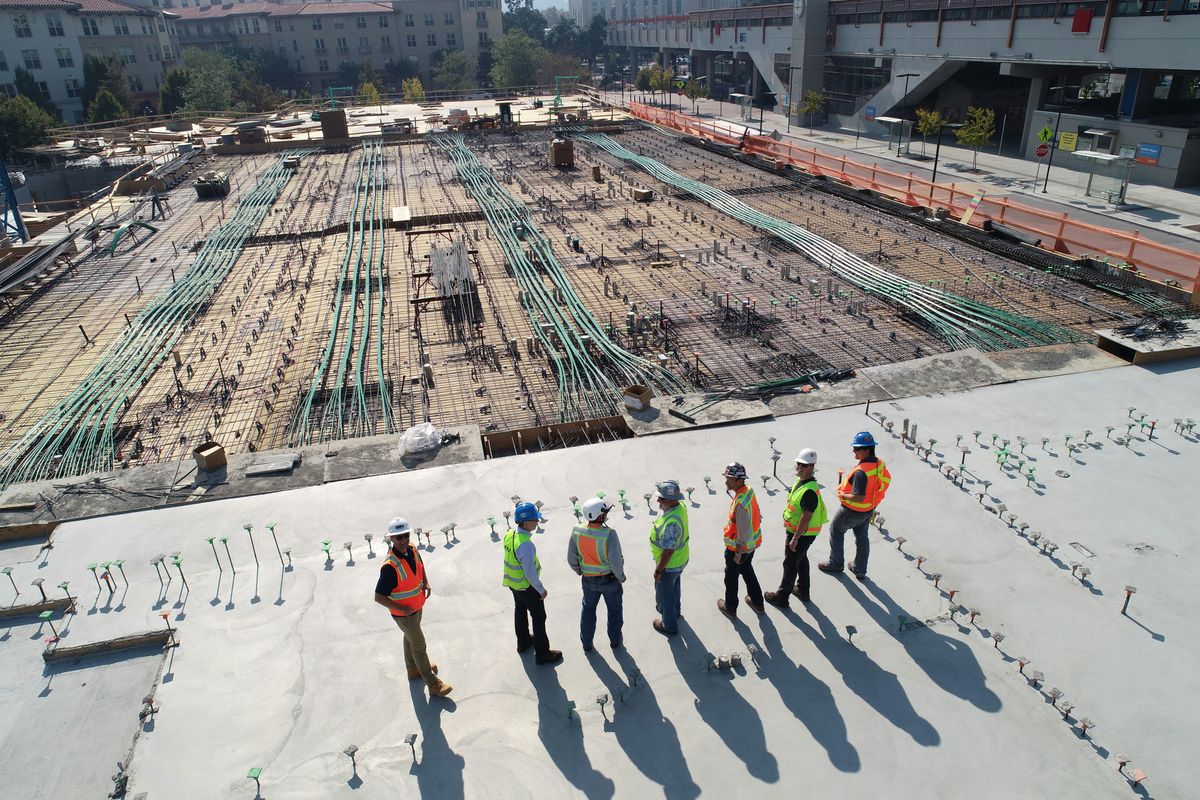In the realm of USA-Saudi infrastructure projects, managing financial transactions is critical, and this includes the effective handling of late payments. To mitigate the impact of such delays, a structured recovery system is in place to ensure that due funds are recovered in a timely and efficient manner. This system is divided into three distinct phases, each with its own set of actions and strategies designed to resolve outstanding debts. Understanding this system is essential for any company involved in such projects, as it not only aids in financial recovery but also helps maintain healthy business relationships.
Key Takeaways
- A three-phase Recovery System is employed to address late payments in USA-Saudi infrastructure projects, with each phase escalating the recovery efforts.
- Phase One involves immediate actions like sending a series of letters and skip-tracing within 24 hours of account placement, followed by persistent collector contact attempts.
- Phase Two sees the involvement of local attorneys who draft demand letters and make persistent contact attempts, with recommendations for further action if necessary.
- Phase Three offers a decision-making process regarding litigation, with an evaluation of the likelihood of debt recovery and an understanding of the associated costs and fees.
- The fee structure for collection services is competitive and tailored, with rates varying based on the age and amount of the claim, and additional fees applicable for accounts requiring legal action.
Understanding the Recovery System for Late Payments
Overview of the Three-Phase Recovery System
We’ve honed a robust three-phase recovery system to ensure your funds are recovered efficiently. Phase One kicks off with immediate action within 24 hours of account placement. Our team sends out the first of four letters and employs skip-tracing to gather the best financial and contact information available. Daily contact attempts are made using a mix of communication methods.
In Phase Two, should initial efforts falter, we escalate the matter to our network of local attorneys. They draft demand letters on prestigious law firm letterhead and persist in contacting the debtor.
Phase Three is the decision-making junction. We provide a clear recommendation based on a thorough investigation of the debtor’s assets and the likelihood of recovery. You’re then at liberty to choose the next step, be it closure, continued collection efforts, or legal action.
Our fee structure is competitive and tailored to the age and amount of the claim, with additional fees applicable for accounts requiring legal action. Here’s a quick breakdown:
- Accounts under 1 year: 30% (1-9 claims) or 27% (10+ claims)
- Accounts over 1 year: 40% (1-9 claims) or 35% (10+ claims)
- Accounts under $1000: 50% regardless of claim count
- Accounts placed with an attorney: 50% regardless of claim count
Initial Actions within 24 Hours of Account Placement
Time is of the essence when managing late payments. Within the first 24 hours of account placement, we spring into action. Our first step is dispatching the initial letter, setting the tone for our determined pursuit. We then dive into skip-tracing, leaving no stone unturned to gather the debtor’s financial and contact details.
Our collectors are relentless, employing a mix of phone calls, emails, text messages, and faxes to reach a resolution. Daily contact attempts are not just routine; they’re a commitment to our clients for the first 30 to 60 days. Should these efforts not yield the desired outcome, we’re prepared to escalate to Phase Two, involving our network of skilled attorneys.
Our proactive approach ensures that every avenue is explored promptly, maximizing the chances of a successful recovery.
Here’s a snapshot of our initial actions:
- Send the first of four letters via US Mail
- Conduct thorough skip-tracing
- Initiate daily contact attempts across multiple communication channels
We understand that managing late payments in USA-Saudi infrastructure projects involves a structured three-phase recovery system, emphasizing communication, financial implications, and legal considerations for effective debt recovery.
Daily Contact Attempts and Escalation to Phase Two
Persistence is key in our debt recovery process. We make daily contact attempts for the first 30 to 60 days, using every tool at our disposal: phone calls, emails, text messages, faxes, and more. If these efforts don’t yield results, we escalate to Phase Two.
In Phase Two, the case is immediately forwarded to an affiliated attorney within the debtor’s jurisdiction. This marks a significant step in our pursuit of resolution.
The transition is smooth, with our local attorneys ready to draft demand letters and make persistent contact attempts. If the likelihood of recovery remains low, we may recommend case closure or prepare for litigation, mindful of the upfront costs involved.
Here’s a quick overview of our initial efforts:
- First of four letters sent via US Mail
- Skip-tracing and investigation
- Daily contact attempts by our collector
Should we move to Phase Two, you’ll be informed of the next steps, including any recommendations for further action.
Phase One: Initial Collection Efforts
The Four-Letter Series and Skip-Tracing
We kick off our recovery efforts with a strategic four-letter series sent directly to the debtor. This series is designed to escalate the urgency of the situation, with each letter increasing in tone and demand. Skip-tracing is our next critical step, ensuring we have the most accurate financial and contact information on hand.
- First letter: A friendly reminder of the debt.
- Second letter: A firmer request for payment.
- Third letter: A warning of impending actions.
- Fourth letter: Final notice before escalation.
We don’t just send letters; we actively pursue every lead. Our team is relentless in tracking down the debtor, using the latest technology and databases to uncover any hidden assets or contact points. It’s about leaving no stone unturned.
If our initial efforts don’t yield results, we’re prepared to take the next step. We’re not just chasing payments; we’re safeguarding your investments and maintaining the integrity of your projects.
Collector’s Role in Resolving the Debt
Our collectors are the frontline warriors in the debt recovery process. They employ a mix of negotiation, mediation, and, if necessary, legal strategies to secure payment. Persistence is key; they make daily contact attempts, using every tool at their disposal—phone, email, text, and fax—to engage with debtors and find a resolution.
- First contact within 24 hours of account placement
- Daily attempts for 30 to 60 days
- Escalation to legal action if resolution fails
We’re committed to a transparent and efficient process, ensuring that US construction companies can focus on their core business while we handle the complexities of debt recovery in Saudi projects.
Our goal is to resolve debts amicably, but we’re prepared to take the necessary steps to protect your interests. When a case escalates, we’re ready to transition to the next phase, involving our network of local attorneys.
Transitioning to Legal Action if Necessary
When we exhaust all initial collection efforts without success, we face a critical juncture. We must decide whether to transition to legal action. This decision isn’t taken lightly; it’s a calculated move based on a comprehensive assessment of the debtor’s assets and the likelihood of recovery.
If the prospects of recovery are dim, we’ll advise closing the case. This means no further costs to you. However, if litigation seems viable, we’ll lay out the next steps:
- Payment of upfront legal costs, typically $600-$700.
- Filing a lawsuit to recover all monies owed, including filing costs.
We’re committed to managing financial challenges in cross-border projects, ensuring recovery systems for late payments are effective and tailored to the specifics of each case.
Our fee structure is transparent, with rates varying based on claim age and amount. For accounts requiring legal action, a 50% rate of the amount collected is standard. This is a necessary investment in the pursuit of what is rightfully yours.
Phase Two: Involvement of Local Attorneys
Drafting Demand Letters on Law Firm Letterhead
Once we escalate to Phase Two, our affiliated attorneys take the helm. Demand letters are drafted on prestigious law firm letterhead, signaling the seriousness of the situation to the debtor. This step often prompts immediate action.
Persistence is key. Our attorneys don’t just send a letter and wait. They follow up rigorously, ensuring the debtor understands the gravity of their situation. Here’s what you can expect:
- Immediate drafting and dispatch of the demand letter.
- Persistent follow-up calls to reinforce the message.
- A clear outline of the consequences of non-payment.
We strive to resolve the matter before it escalates further, saving you time and resources.
If the debtor remains unresponsive, we’re prepared to assess and recommend the next course of action. Rest assured, we’re with you every step of the way.
Persistent Contact Attempts by the Attorney’s Office
We don’t let up. Once an attorney takes on your case, persistent contact is key. Daily calls, letters, and emails become the norm, ensuring the debtor feels the pressure of legal involvement. Our attorneys are relentless, pushing for a resolution that serves your interests.
We understand the importance of maintaining a steady stream of communication. It’s not just about sending a message; it’s about sending the right message, at the right time, to the right person.
If the debtor remains unresponsive, we escalate our efforts. Here’s what you can expect:
- A series of demand letters, escalating in tone, sent at strategic intervals.
- Regular phone calls to the debtor, increasing in frequency over time.
- Email correspondence, meticulously documented for potential legal proceedings.
Our goal is to make it clear that ignoring the debt is not an option. We aim to bring the debtor to the negotiating table, ready to resolve the outstanding payment. If these efforts don’t yield results, we’re prepared to advise on the next steps.
Assessment and Recommendations for Further Action
After exhaustive efforts in Phase Two, we reach a critical juncture. Our team conducts a comprehensive assessment of the debtor’s financial status and the surrounding facts of the case. We then present you with a clear choice.
- If the likelihood of recovery is low, we advise closing the case. This incurs no cost to you, ensuring a risk-free process.
- Should litigation seem viable, we lay out the path ahead. You’ll face a decision: to litigate or not. Opting out means no further obligation, while choosing litigation requires covering upfront legal costs.
The costs for legal action typically range from $600 to $700, based on jurisdiction. These cover court costs and filing fees, essential for initiating a lawsuit.
Our fee structure is transparent and competitive, reflecting the complexity and age of the claim. We’re committed to managing financial aspects efficiently, especially in the context of USA-Saudi projects where timely recovery is crucial.
Phase Three: Decision Making and Potential Litigation
Evaluating the Likelihood of Debt Recovery
We assess the viability of recovery with precision. Bold decisions guide us: to pursue or to close. Our process is informed by a thorough investigation of the debtor’s assets and the surrounding facts of the case.
- If recovery seems unlikely, we recommend closure. No fees owed.
- If litigation appears promising, we lay out the costs. The choice is yours.
We stand by our swift and decisive debt recovery process in USA-Saudi trade and renewable energy projects. Escalation to legal action if necessary, ensuring fair business practices and financial stability.
Our recommendations hinge on the potential for success. We’re transparent about the odds, sparing you from fruitless pursuits.
Options for Proceeding with or Without Legal Action
When we reach the crossroads of Phase Three, our path hinges on the feasibility of recovery. We must choose wisely between litigation and alternative measures. If the odds are against us, we recommend closing the case, free of charge. But if litigation seems promising, we’re faced with a decision.
Should we opt out of legal action, we can still pursue the debtor through persistent collection efforts. This includes calls, emails, and faxes, at no extra cost. On the other hand, choosing litigation means committing to upfront legal fees, which typically fall between $600-$700.
Our commitment is to provide clear options and transparent costs, empowering you to make the best decision for your situation.
Here’s a quick glance at our fee structure for collection services:
- Accounts under 1 year: 27%-30% of the amount collected.
- Accounts over 1 year: 35%-40% of the amount collected.
- Accounts under $1000: 40%-50% of the amount collected.
- Accounts requiring legal action: 50% of the amount collected.
Understanding the Costs and Fees for Litigation
When we decide to proceed with litigation, we’re committing to a path with its own set of costs. Upfront legal fees are a reality, typically ranging from $600 to $700, depending on the jurisdiction. These cover court costs, filing fees, and the like. It’s a necessary investment to enforce our rights and recover what’s owed.
Our fee structure is designed with flexibility in mind, adapting to the age and amount of the claim. Here’s a quick breakdown:
- Accounts under 1 year: 30% of the amount collected.
- Accounts over 1 year: 40% of the amount collected.
- Accounts under $1000: 50% of the amount collected.
- Accounts requiring legal action: 50% of the amount collected.
We strive for transparency and efficiency in every phase. Our recommendations are always in line with the best chance of debt recovery.
Remember, if litigation doesn’t result in recovery, you owe us nothing further. We shoulder the risk, ensuring our interests are aligned with yours for a successful outcome.
Fee Structure for Collection Services
Competitive Collection Rates and Tailored Services
We pride ourselves on offering competitive collection rates that are designed to meet the unique needs of USA-Saudi infrastructure projects. Our fee structure is flexible, adapting to the age and amount of the claim, ensuring you get the best possible service for your situation.
| Number of Claims | Accounts < 1 Year | Accounts > 1 Year | Accounts < $1000 | Attorney Placed |
|---|---|---|---|---|
| 1-9 | 30% | 40% | 50% | 50% |
| 10+ | 27% | 35% | 40% | 50% |
Our tailored approach means we’re equipped to handle late payments, engage in effective debt collection, and maintain crucial customer relationships, all while considering the legal nuances specific to the energy sector trade.
Remember, our goal is to resolve your delinquent accounts efficiently, without compromising your business relationships. With our expertise in managing late payments in USA-Saudi projects, you can trust us to deliver results.
Rate Variations Based on Claim Age and Amount
Our fee structure is designed to be as fair as possible, reflecting the complexity and age of the claim. The younger the account, the lower the fee; it’s that simple. We incentivize early submissions with competitive rates to encourage swift action.
For accounts less than a year old, the rates are more favorable. Here’s a quick breakdown:
- For 1-9 claims: 30% of the amount collected.
- For 10 or more claims: 27% of the amount collected.
As the claim ages, the rate increases. This is to account for the additional effort required to collect on older debts.
Remember, accounts over a year incur higher rates due to the increased difficulty in collection. It’s in your best interest to act promptly to minimize costs.
Additional Fees for Accounts Requiring Legal Action
When we escalate to legal action, we’re transparent about the costs. Expect upfront legal fees to cover court costs and filing fees, typically ranging from $600 to $700. These are necessary for our affiliated attorneys to initiate litigation on your behalf.
Litigation is a serious step, and we ensure you’re informed every step of the way. If litigation does not result in debt recovery, rest assured, you owe us nothing further.
Our fee structure is clear-cut:
- Accounts under 1 year: 30% (1-9 claims) or 27% (10+ claims) of the amount collected.
- Accounts over 1 year: 40% (1-9 claims) or 35% (10+ claims) of the amount collected.
- Accounts under $1000: 50% of the amount collected.
- Accounts requiring attorney involvement: 50% of the amount collected.
We’re committed to a no-recovery, no-fee policy for legal actions that don’t result in payment. Your financial commitment is limited to the initial legal costs, with no hidden charges.
Navigating the complexities of debt recovery can be challenging, but with Debt Collectors International, you’re in capable hands. Our fee structure for collection services is designed to be transparent and cost-effective, ensuring you get the best value for your money. Whether you’re dealing with overdue invoices or need assistance with accounts receivable management, our expert team is ready to help. Don’t let unpaid debts disrupt your business—visit our website today to learn more about our services and how we can assist you in recovering what’s rightfully yours.
Frequently Asked Questions
What happens within 24 hours of placing an account for collection?
Within 24 hours of placing an account, the first of four letters is sent to the debtor, skip-tracing and investigation are conducted to obtain the best financial and contact information, and our collector initiates contact attempts using various communication methods. Daily contact attempts continue for the first 30 to 60 days.
What occurs if initial collection efforts in Phase One fail?
If all attempts to resolve the account fail in Phase One, the case is escalated to Phase Two, where it is immediately forwarded to one of our affiliated attorneys within the debtor’s jurisdiction for further action.
What actions do affiliated attorneys take in Phase Two?
In Phase Two, the affiliated attorney drafts a demand letter on their law firm letterhead and begins persistent contact attempts via telephone, in addition to sending a series of letters to the debtor.
What are the possible recommendations at the end of Phase Two?
At the end of Phase Two, the recommendation will either be to close the case if recovery is unlikely, or to proceed with litigation if there is a potential for debt recovery.
What are the costs associated with proceeding to litigation?
If you decide to proceed with litigation, you will be required to pay upfront legal costs such as court costs and filing fees, typically ranging from $600.00 to $700.00, depending on the debtor’s jurisdiction.
How is the fee structure for collection services determined?
The fee structure for collection services is competitive and tailored, depending on the number of claims and their age. Rates vary from 27% to 50% of the amount collected, with different rates for accounts under 1 year in age, over 1 year in age, under $1000.00, and accounts placed with an attorney.





